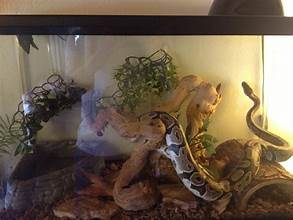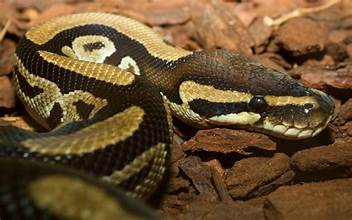Ball pythons are becoming very popular as pets because of their relatively low requirements and calm demeanor. Providing a suitable habitat is essential for their well-being.
Essential Housing Components
- Enclosure:
- Size: An adult ball python requires a 40-gallon breeder tank. A small tank suits juveniles but ensures they have enough space to move around comfortably.
- Material: Glass enclosures are popular, providing good visibility and maintaining heat and humidity well. However, plastic enclosures can be a more affordable option.
- Substrate:
- Avoid: Avoid substrates like cedar, pine, and cypress, as they can release harmful chemicals.
- Options: Consider using coconut coir, orchid bark, or newspaper. These substrates are safe, absorbent, and easy to clean.
- Heat Source:
- Heat Mat: Place a heat mat under one side of the enclosure to create a warm and cool side.
- Temperature Gradient: Ensure the warm side is around 88-92°F (31-33°C) and the cool side is around 78-82°F (26-28°C).
- Humidity:
- Level: Ball pythons require around 55-65% humidity.
- Methods: Use a hygrometer to monitor humidity and adjust it by misting the enclosure or using a humidifier.
- Water Bowl:
- Size: Provide a large enough water bowl for your ball python to soak in if desired.
- Freshness: Change the water daily to prevent bacterial growth.
Enrichment and Hiding Places
- Decor: Add natural branches, rocks, and plants to create a stimulating environment.
- Hiding Spots: Provide several hiding places, such as PVC pipes or small boxes.
- Enrichment: Regularly rotate hiding spots and decorations to engage your ball python.

Care and Maintenance
- Regular Cleaning: Clean your ball python’s enclosure weekly to remove waste and prevent bacteria buildup.
- Feeding: Offer your ball python appropriate-sized prey, such as mice or rats, once a week.
- Handling: Gently handle your Ball Python only when necessary to minimize stress.
Following this guide, keep your Ball Python happy and healthy in their new home.
Keep checking back to get more helpful information for your Ball Python.




